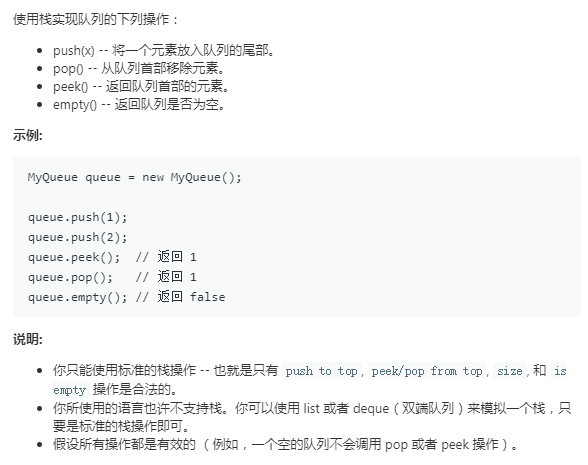
1 class MyQueue { 2 public: 3 /** Initialize your data structure here. */ 4 MyQueue() { 5 6 } 7 stack<int> a; 8 stack<int> b; 9 /** Push element x to the back of queue. */ 10 void push(int x) { 11 a.push(x); 12 } 13 14 /** Removes the element from in front of queue and returns that element. */ 15 int pop() { 16 int len=a.size(); 17 for(int i=0;i<len;i++){ 18 b.push(a.top()); 19 a.pop(); 20 } 21 int tmp=b.top(); 22 b.pop(); 23 for(int i=0;i<len-1;i++){ 24 a.push(b.top()); 25 b.pop(); 26 } 27 return tmp; 28 } 29 30 /** Get the front element. */ 31 int peek() { 32 int len=a.size(); 33 for(int i=0;i<len;i++){ 34 b.push(a.top()); 35 a.pop(); 36 } 37 int tmp=b.top(); 38 for(int i=0;i<len;i++){ 39 a.push(b.top()); 40 b.pop(); 41 } 42 return tmp; 43 } 44 45 /** Returns whether the queue is empty. */ 46 bool empty() { 47 return a.empty(); 48 } 49 }; 50 51 /** 52 * Your MyQueue object will be instantiated and called as such: 53 * MyQueue* obj = new MyQueue(); 54 * obj->push(x); 55 * int param_2 = obj->pop(); 56 * int param_3 = obj->peek(); 57 * bool param_4 = obj->empty(); 58 */